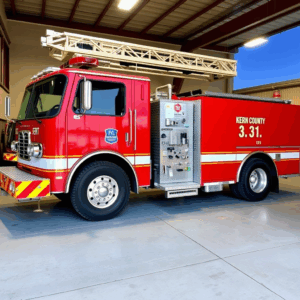Understanding what type of fire can be put out with water is crucial for effective firefighting, especially in rural and resource-limited areas. The fire department of Kern County has recently placed into service a new water tender of 2,100 gallons at Station 31 in Wasco, California. The water tanker is designed to relieve problems caused by the unavailability of water during emergencies. This one-of-a-kind apparatus supports firefighting efforts in places that have insufficient municipal water sources. By establishing water as both a handy and adaptable firefighter, this evolution now puts forward the question of when and how to apply water. Knowledge about its correct application in these various scenarios should greatly benefit homeowners, particularly those dealing with properties affected by fire.

Why Water Works for Class A Fires
Water has quite unique properties, making it ideal for fire extinguishment effectiveness of Class A. It directly addresses the heating component of the fire triangle, which explains why this is most effective for that fire class:
- Heat Absorption
The water reduces the material’s temperature below its ignition levels and thereby extinguishes the flaming fire. - Accessibility & Non-Toxic Nature
Water is a widely available, eco-friendly resource that doesn’t leave harmful chemical residues behind. - Easy Application
Hoses, buckets, and sprinkler systems make water straightforward to use in emergency situations.
To maximize efficiency, aim water consistently at the fire’s base rather than just the flames. This ensures complete extinguishment and minimizes the risk of reignition.
Safety Guidelines for Responding to Fires at Home
It is vital to act quickly and with maximum care once a fire breaks out. Observe some suggested steps on how to eliminate damage and prevent fires from escalating.
Determine the Fire’s Type
Consider the cause of the fire prior to putting it out. Understanding what type of fire can be put out with water is a fundamental step in determining the safest response. For example, water is inappropriate for electrical fires or those caused by grease or fuel. Instead, using the correct extinguishers designed for these specific fire types is essential to prevent escalation and ensure safety.
Prioritize Your Safety
- Ensure you have a clear path to escape in case the fire spreads.
- Never spray water on electrical equipment or appliances.
- Be cautious of smoke inhalation, which can be deadly even in smaller amounts.
Notify Professionals
Even if you succeed in controlling or extinguishing the fire, always contact emergency services. Fire professionals have the tools and expertise to ensure the fire is entirely extinguished and assess any lingering risks.
Selling Fire-Damaged Homes with a Focus on Safety
If you’re selling a fire-damaged property, showcasing modern safety measures can enhance the home’s appeal. Buyers want homes that are not only repaired but also prepared for future incidents.
Install Updated Systems
Investing in modern fire detection systems, such as smart smoke alarms, sprinkler systems, and accessible extinguishers, can reassure potential buyers about their safety.
Be Open About Fire History
When it comes to selling a fire-damaged home, integrity is the most important thing. Honest disclosure is essential as regards repairs and upgrades post-fire. It may even tilt the odds in your favor to have fire-resistant features as part of the property, such as treated roofing material or sealed wiring.
Highlight Educational Resources
Providing a guide on fire safety, including an explanation of what type of fire can be put out with water, creates a positive impression. Offering such supplementary resources adds value to the property and builds buyer confidence.
Long-Term Fire Prevention Tips for Homeowners
Fire safety is not a one-time task; ongoing vigilance ensures the protection of your home and family.
- Regular Maintenance
Check fire extinguishers, smoke detectors, and sprinkler systems frequently to confirm they are fully operational. - Prepare for Future Events
Locating water sources in proximity and keeping fire extinguishing equipment ready is essential, particularly for activities like barbecuing or having a campfire outdoors. - Consult Experts
If you plan to sell a property with some fire damage, bring into the marketing strategy people experienced in advertising these types of homes who know how to effectively convey such safety precautions.
Knowing which types of fires can be safely extinguished with water is an essential aspect of fire safety. While water is highly effective for combating Class A fires, using it on other types of fires can exacerbate the situation. Understanding fire classifications and being equipped with the right tools are crucial steps to protect yourself and your household.
Previous